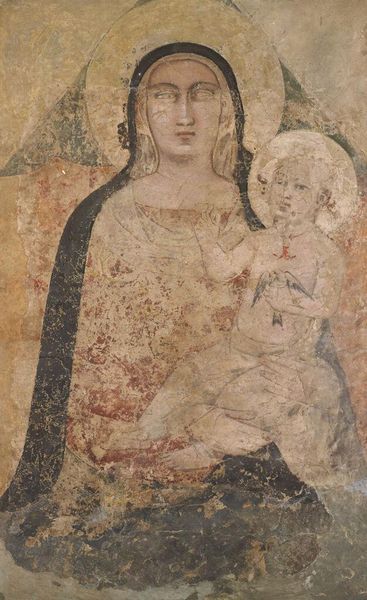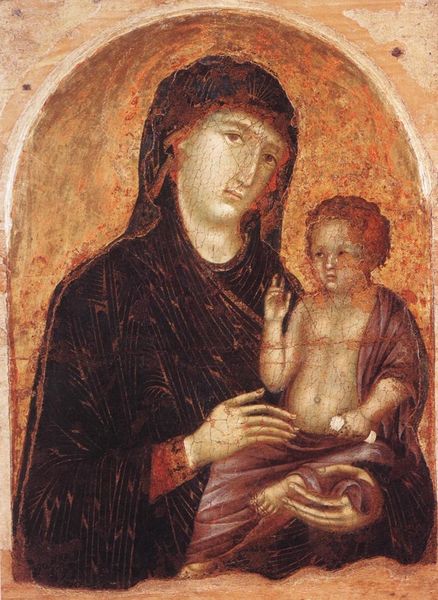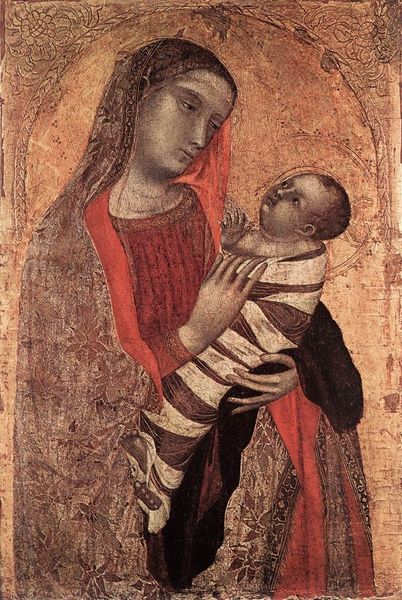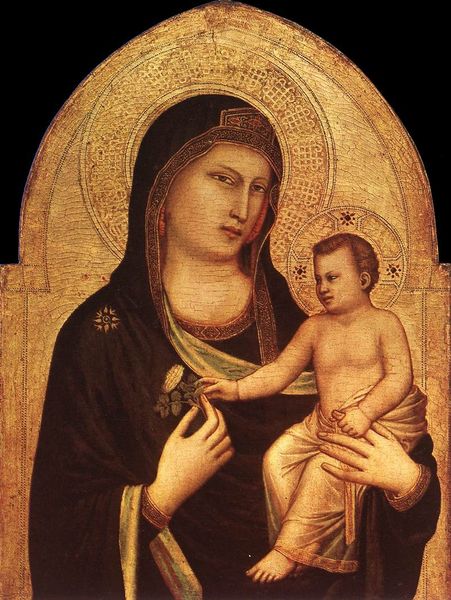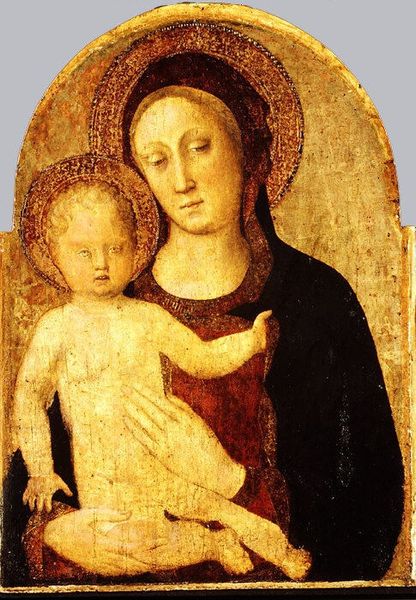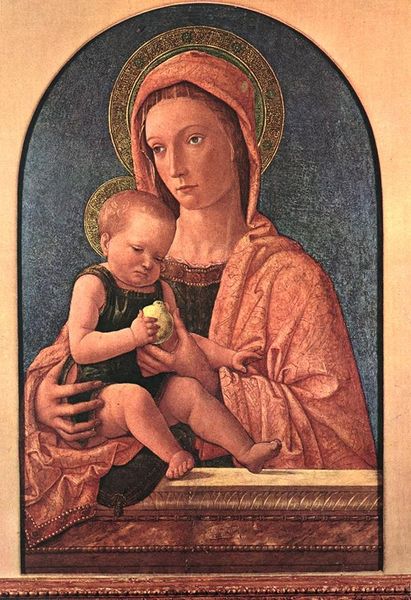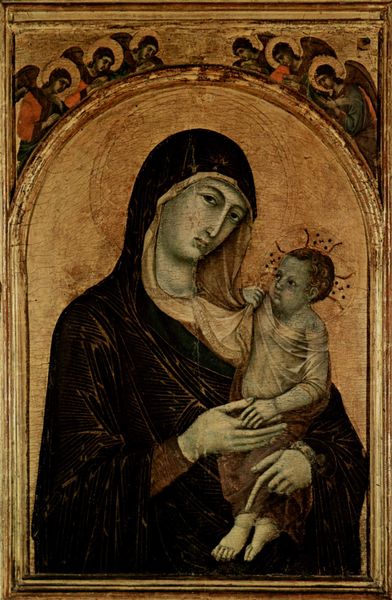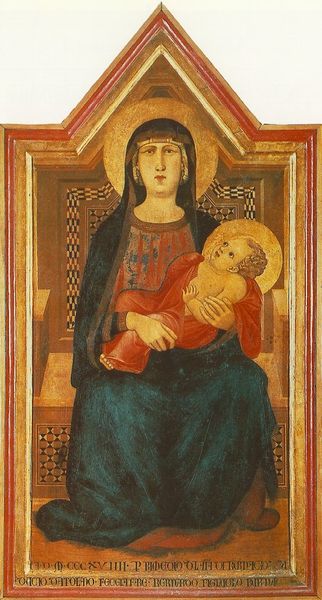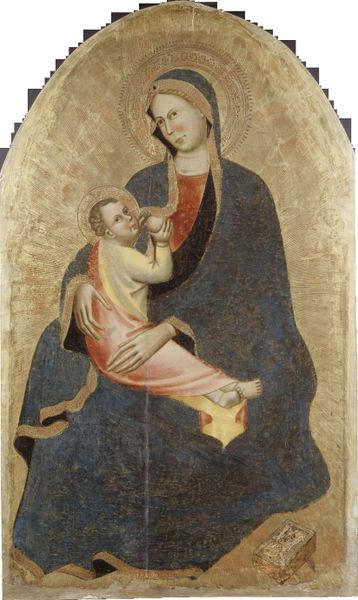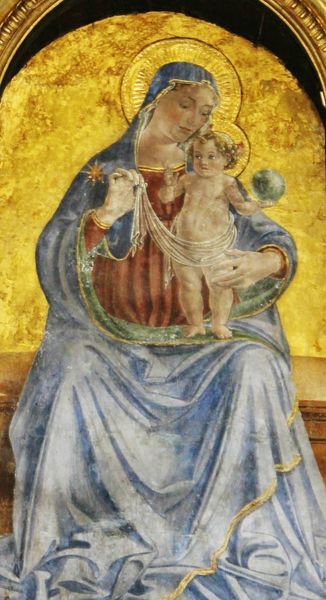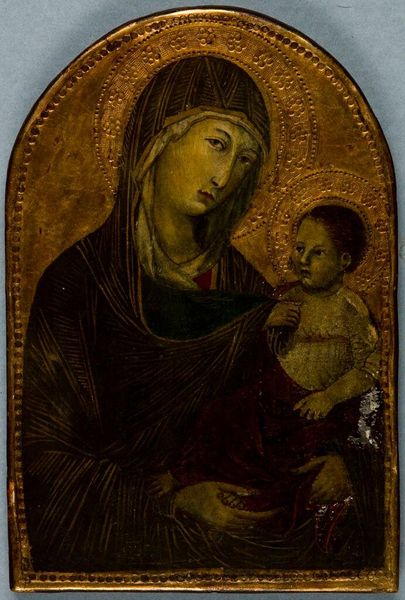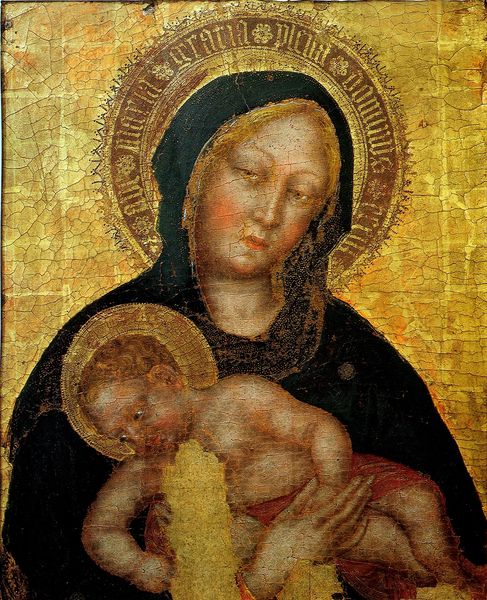
painting, fresco
#
portrait
#
painting
#
fresco
#
oil painting
#
child
#
christianity
#
italian-renaissance
#
early-renaissance
#
virgin-mary
#
christ
Copyright: Public domain
Fra Angelico’s Madonna and Child was made on the very walls of this convent, using the fresco technique. This required the artist to work directly onto wet plaster. The pigment was absorbed as the wall dried, creating an inseparable bond between image and architecture. You can see how the artist prepared the wall by layering plaster, visible in the rough edges of the painting, where the plaster extends beyond the image. The texture and weight of the plaster also influenced the final look of the painting. The rough surface created a slightly grainy appearance, softening the figures and giving them a gentle, ethereal quality. The colors, muted and earthy, were chosen for their compatibility with the alkaline environment of the wet plaster. Frescoes were a labor-intensive process, demanding speed and precision. The artist had to plan carefully, working in sections to complete each area before the plaster dried. The very nature of fresco – its directness, its permanence – speaks to a belief in the power of art to transform the spaces we inhabit. It serves as a reminder that the meaning of a work is always bound to the process and place of its making.
Comments
No comments
Be the first to comment and join the conversation on the ultimate creative platform.
